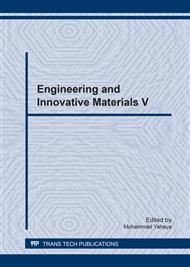p.234
p.239
p.243
p.248
p.253
p.261
p.265
p.270
p.275
An Improved Technique for Chirality Assignment of SWCNTs Exploiting their (2n+m) Family Behavior
Abstract:
In this work, an improved technique for chirality assignment of single wall carbon nanotubes (SWCNT) is proposed which work for both isolated and bundles SWCNTs. The technique exploits the (2n+m) family pattern both in optical transitions vs diameter plot and Raman G-mode frequency vs diameter plot of SWCNTs. Using two different plots can give accurate value of the family of unknown SWCNTs that can be used to find chiral index (n, m) of unknown SWCNT unambiguously in most of the cases. Unlike existing methods, graphical comparison or pattern recognition with an existing Kataura plot is not required here. Chirality of 13 SWCNTs are assigned here using this technique. Validity of assigned chirality is cross checked from previous experimental reports. The technique is especially useful for determining chirality of isolated SWCNT.
Info:
Periodical:
Pages:
253-257
Citation:
Online since:
March 2017
Authors:
Price:
Сopyright:
© 2017 Trans Tech Publications Ltd. All Rights Reserved
Share:
Citation:


